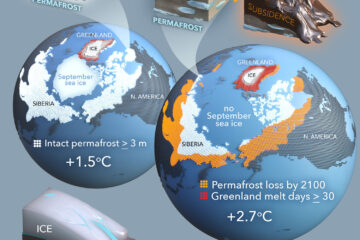Assessing the relationship between microwave vegetation optical depth and gross primary production
At the global scale, the uptake of atmospheric carbon dioxide by terrestrial ecosystems through photosynthesis is commonly estimated through vegetation indices or biophysical properties derived from optical remote sensing data. Microwave observations of vegetated areas are sensitive to different components of the vegetation layer than observations in the optical domain and may therefore provide complementary information on the vegetation state, which may be used in the estimation of Gross Primary Production (GPP). However, the relation between GPP and Vegetation Optical Depth (VOD), a biophysical quantity derived from microwave observations, is not yet known. This study aims to explore the relationship between VOD and GPP. VOD data were taken from different frequencies (L-, C-, and X-band) and from both active and passive microwave sensors, including the Advanced Scatterometer (ASCAT), the Soil Moisture Ocean Salinity (SMOS) mission, the Advanced Microwave Scanning Radiometer for Earth Observation System (AMSR-E) and a merged VOD data set from various passive microwave sensors. VOD data were compared against FLUXCOM GPP and Solar-Induced chlorophyll Fluorescence (SIF) from the Global Ozone Monitoring Experiment-2 (GOME-2). FLUXCOM GPP estimates are based on the upscaling of flux tower GPP observations using optical satellite data, while SIF observations present a measure of photosynthetic activity and are often used as a proxy for GPP. For relating VOD to GPP, three variables were analyzed: original VOD time series, temporal changes in VOD (ΔVOD), and positive changes in VOD (ΔVOD≥0). Results show widespread positive correlations between VOD and GPP with some negative correlations mainly occurring in dry and wet regions for active and passive VOD, respectively. Correlations between VOD and GPP were similar or higher than between VOD and SIF. When comparing the three variables for relating VOD to GPP, correlations with GPP were higher for the original VOD time series than for ΔVOD or ΔVOD≥0 in case of sparsely to moderately vegetated areas and evergreen forests, while the opposite was true for deciduous forests. Results suggest that original VOD time series should be used jointly with changes in VOD for the estimation of GPP across biomes, which may further benefit from combining active and passive VOD data.


